How to perform an extensive local SEO audit in 2024
A local SEO audit is the process of identifying local search problems that can prevent your business from achieving great rankings on local search and Google Maps.
By using this audit process I was able to increase calls for a local business by over 50% compared to the previous year.
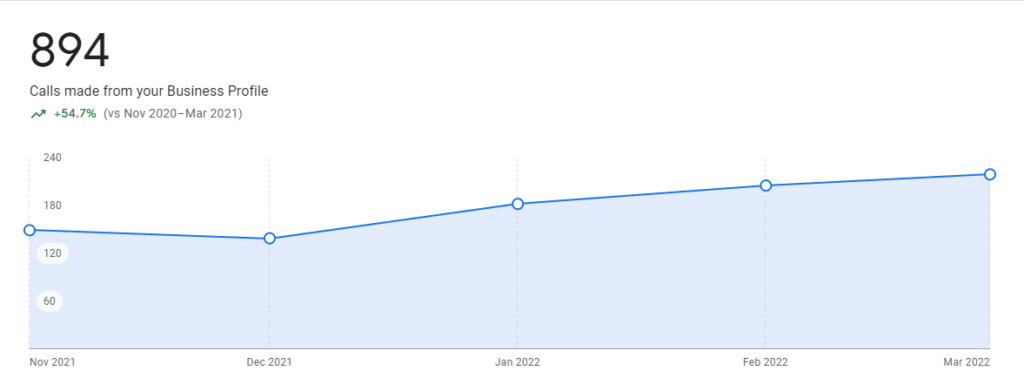
Their local organic performance increased by over 600% from an average of 15 clicks per day to over 100 clicks per day.
In this guide I’m going to show you exactly how to perform an extensive local SEO audit and get great results like this:
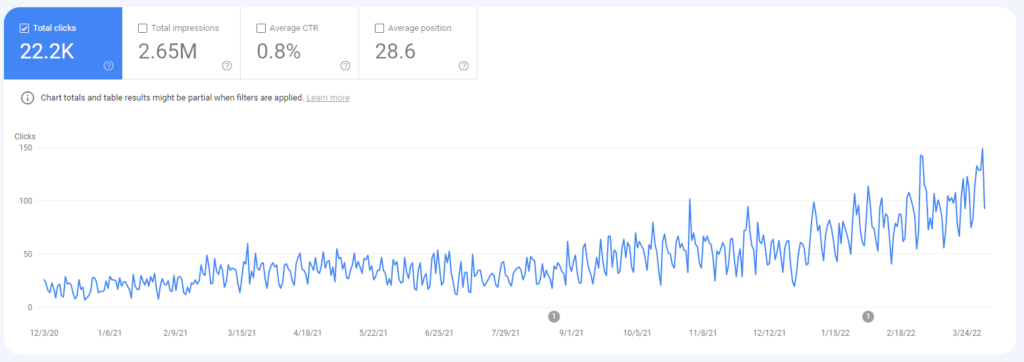
Local SEO Audit Guide
1. Local SEO Audit Fundamentals
The first step is to evaluate the current situation & prepare yourself. I’m going to show you the tools I use and what’s important when evaluating the current situation.
Local SEO Audit Tools
Several tools will help you perform a local SEO audit. Some of them are free, while others do require payment.
You don’t necessarily have to pay for tools, however they save you time if you should decide to pay for them.
So it’s up to you whether you choose a paid or free plan of your favorite local SEO tools.
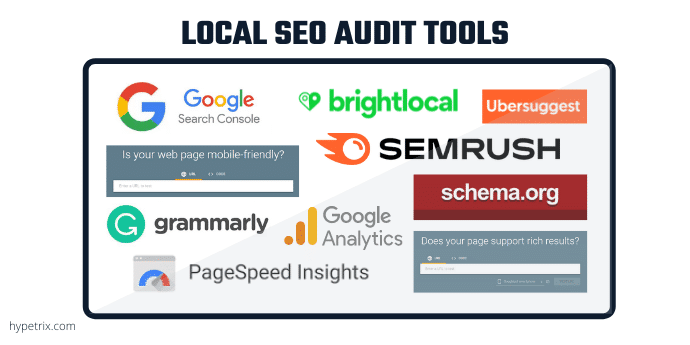
- Google Business Profile: Every local business should have a Google Business Profile to advertise for free on Google’s local search and Google Maps.
- Google Search Console (GSC): This is Google’s search analysis tool. It’s free, you should use it!
- Brightlocal: Brightlocal is my favorite local search audit tool. It can help you with rank tracking, GBP monitoring, review management, citation tracking, building, etc. They also offer a 14-day free trial.
- Semrush: From keyword tracking to local SEO monitoring. Semrush can do almost everything you can imagine. It’s not necessary, but can be a great plus.
- Pleper: My go-to tool to audit Google Business Profiles.
- Google’s web.dev audit tool: This is a great tool to test your site’s performance and page speed. The best part is is that it’s free.
- Mobile-Friendly Test: This is Google’s mobile-friendly testing tool. It’s free and accurate.
- Rich Results Test: Google provides a tool to test your structured data (Schema Markup). It will tell you about markups like local business schema.
- Grammarly: Not only does Grammarly provide a spelling and grammar check but also a free Plagiarism Checker. If you want to play it safe, you should check your content with this tool.
- Google Analytics: Everyone who is into search engine optimization should use it.
What search engines are important to you
Google is the number one search engine you should be focusing on. Apart from Google, there is a bunch of other search engines that can drive a good amount of traffic to your business as well.
Google Analytics can tell you about the different traffic sources your customers use to find your business. Just see how much traffic you get from them and have a look for opportunities such as registering for Bing’s local search profile.

Rank Checking
Whenever you want to check your local rankings on Google, you should consider using an unbiased local search results checker.
That is because Google uses a variety of personalization filters to show you highly relevant but inaccurate search results.
Those unbiased local search results checkers reset Google search results and display them as less personalized, less biased.
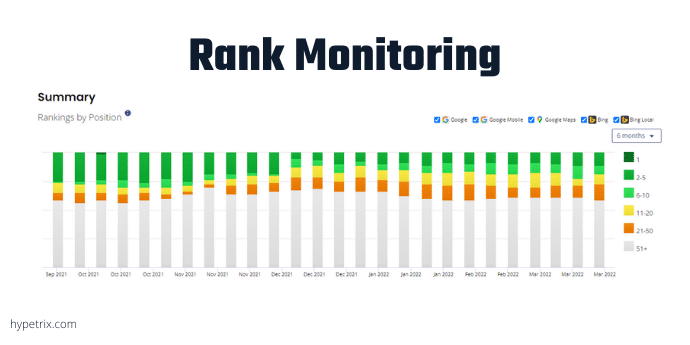
Search grid check
You’ve probably heard the phrase “how can I get to #1 on Google”. Well, that phrase doesn’t apply to local SEO. There is no simple #1 ranking on Google’s local search.
Your local business can obtain #1 rankings in one area and stay out of the top 20 in countless other areas.
As local rankings depend heavily on the distance from the searcher to the business, rankings change when distance changes.
Because no one has the time to check millions of rankings from all possible locations your searching customers could search from, you should use a local search grid checker.
It displays a grid of ranking positions in a determined area that you can use to create before and after comparisons, or simply check out how your business or the businesses you’re taking care of are doing on local search.
Check out my extensive local search grid how-to guide for Brightlocal.
Competitor analysis
Have you ever heard of the term “reverse engineering”? It describes a process of observing a working strategy and applying it to your own business instead of plain trial and error.
That’s how I conduct competitor analysis with great success. We don’t have to reinvent the wheel. Our best competitors (and greatest nightmares) will tell us exactly what we need.
Semrush’s keyword magic tool can help find the most significant competitors. You can then try to figure out what keywords they’re ranking for and what exactly they do in terms of marketing efforts.
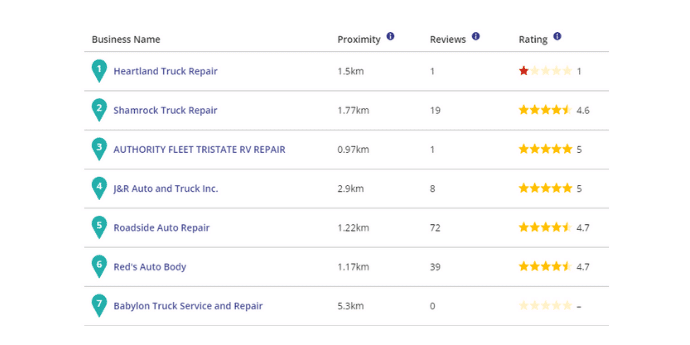
Keyword research
Keyword research is a very broad topic, They could fill books with information about it. I want to give you an overview of 3 of my most commonly used tactics to find local keywords that promise the best results.

Local SEO Checklist
I’ve found 260+ points you need to succeed in local search…. And turned them into a Giant Local SEO Checklist! 🤩
Click the button below!
1. Keyword Gap analysis
You can add competitors’ URLs to the keyword gap tab in Semrush and it will show you the terms your competitors are ranking for, opportunities, and missing keywords. You can then export the list and add it to your keyword spreadsheet.
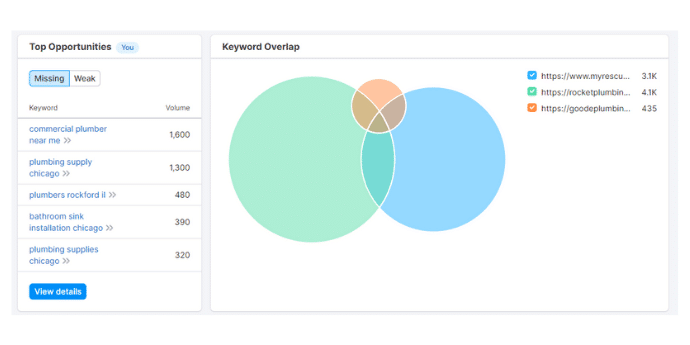
2. Google's auto-suggest
This is a great and easy way for people who don’t want to spend a lot of time and money on keyword research.
You can start by searching for related keywords and Google would give you suggestions based on what you type in.
If that’s not enough, you can type in a specific keyphrase and then add additional letters. Google will then display more suggestions based on the letter you’ve added.
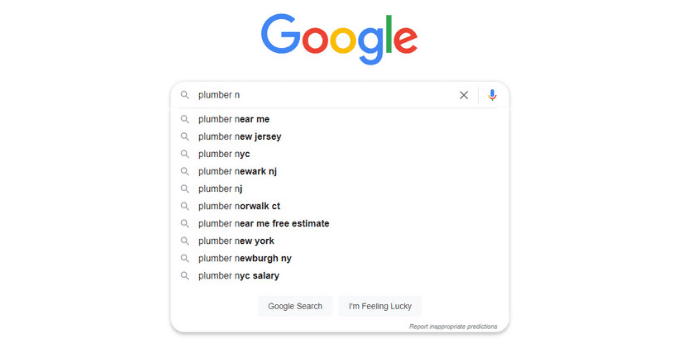
3. Google Ads
The most expensive, but still most accurate way to do keyword research is using Google Ads. You can run a broad match campaign for your main keyword and Google will show you all the related keywords people searching for in your local area (impressions).
Then you can start building a negative keyword list and eliminate the irrelevant keywords.
This way you will narrow down the keywords to figure out which of them get the most clicks, drive most conversions and lead to biggest profits. You can’t get more accurate results than this.

Traffic
Use Google Analytics to figure out where the current traffic is coming from.
A few of the fundamental sources are:
- Direct (Someone’s coming directly to your site)
- Organic traffic (search engines)
- Local traffic (Google Business Profile or Bing Places)
- Paid traffic (Google Ads)
- Social media (Facebook, Instagram, etc.)
- Referring to traffic (from other websites)
- Specific apps (ex. an email tool)
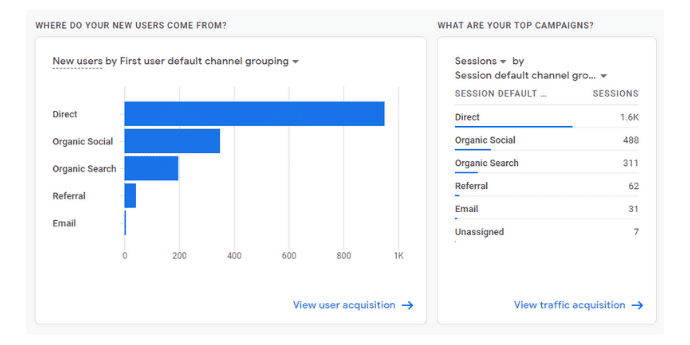
2. Google Business Profile Audit
Auditing the Google Business Profile is certainly one of the most important tasks within a local SEO audit.
Duplicate Google Business Profiles
When you open up a new location on Google Business Profile, Google will usually tell you if there are existing GB Profiles that match your business’ location, parts of the address, phone number, or name.
If Google didn’t tell you anything and you want to be sure there is no duplicate floating around, go to Google and search for your business name, phone number, and address.
If you’ve got a match, try to figure out if the business info you’ve found can be confusing to your customers. If yes, contact Google or mark the business as closed.

Check for actions taken against your GBP
If Google has taken action against your business profile, you should try to get it unsuspended before you move on with the optimization.
Here’s a quick guide:
- Read Google Business Profile guidelines.
- Figure out why the business got suspended.
- Ask for a reinstatement.
Accurate and complete information
This is part of my ultimate Google Business Profile checklist. You should check it out if you want to maximize your GBPs’ performance.

1. Does your listing qualify?
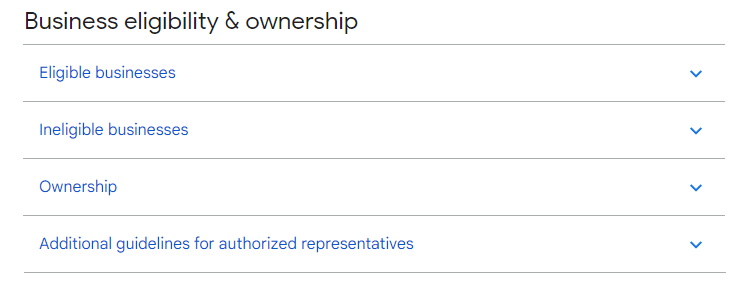
2. Is the business information verified?

3. Choose and optimize your business name
- Does the name reflect your real-world business name?
- Do you use the same name on other sites across the web?
- Is there a chance to add keywords to the name while keeping it compliant with Google’s guidelines?
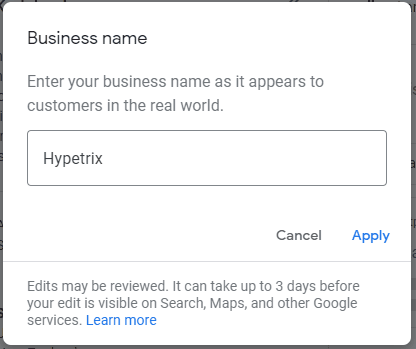
4. Pick the best categories to describe your business
In order to find the best categories for your Google Business Profile, you can use a tool like Pleper. It will show you a bunch of data, including categories of specific GBPs.

5. Did you accurately specify your business location?
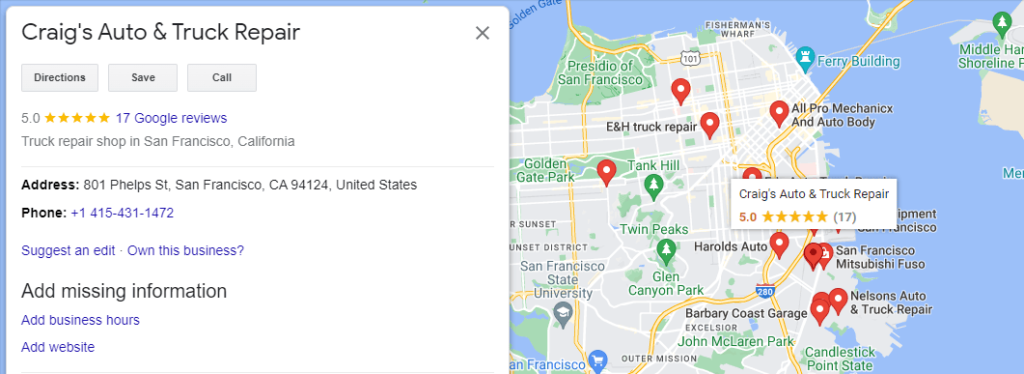
6. Pinpoint your service areas
- Did you add all relevant areas?
- Did you clear the address if your business is a pure service area business?
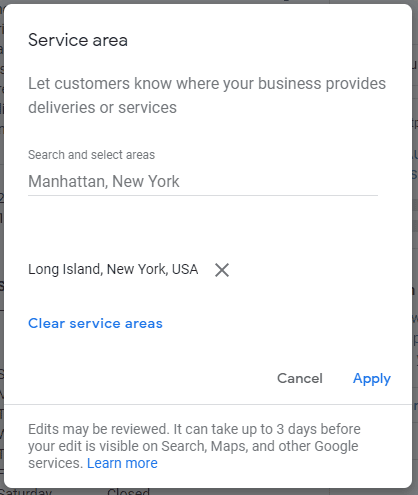
7. Did you add business hours?
- Are they updated?
- Did you add additional hours?
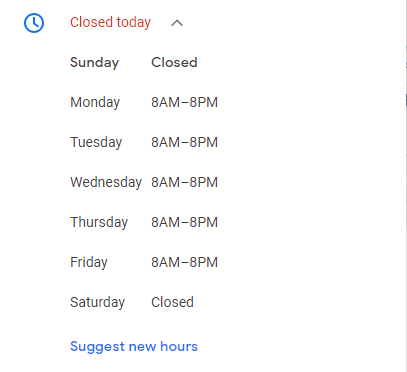
8. Did you add a phone number?
- Did you consider adding a tracking number?
- If yes, did you add the real number as a secondary number?

9. Include your website
- Be sure to add the correct URL
- Maybe you want to track traffic through GSC or GA via UTM parameters?

10. Add an appointment URL

11. Add a business description
Be sure to include the following information in your business description:
- Name
- Age
- Location
- Industry
- Main service/product
- Vision
- USP
12. Showcase products and services
- Proper descriptions
- High-quality images on product pages
- Link back to your service/product pages on your website
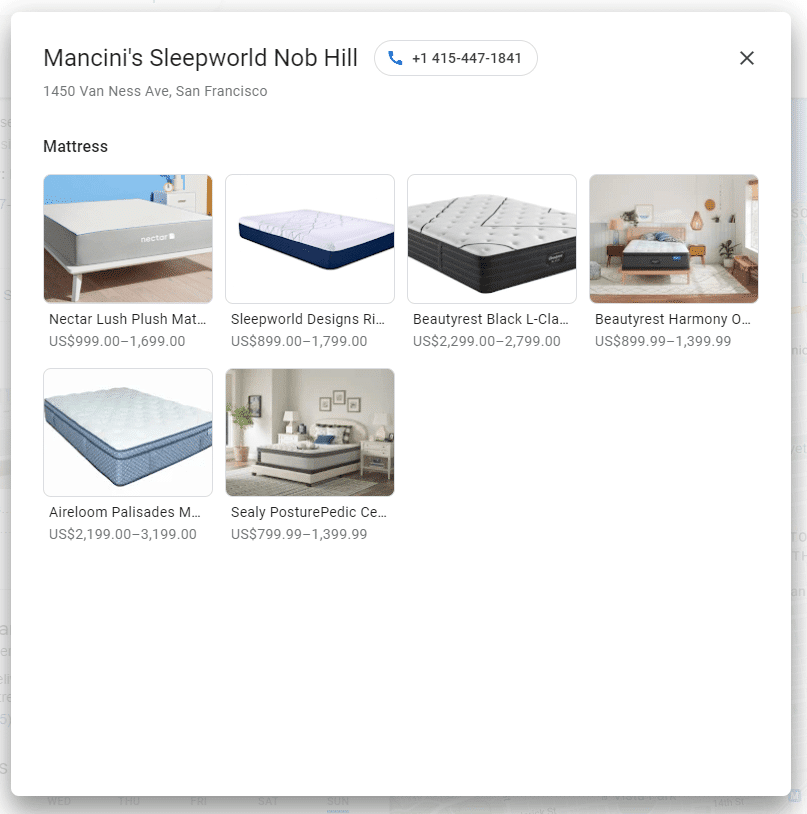
13. Select highlights and attributes

14. Fill out the menu/Order/booking items

15. Take high-quality pictures and videos
Try to cover all areas Google recommends:
- Interior
- Exterior
- Staff
- Cover
- Logo
- Product/Service
- Team
- Identity

16. Enable the messaging feature

17. Pay attention to reviews
- Reply asap
- Answer politely and always be professional in your replies.
- Have a review system set up that guarantees regular incoming reviews?
18. Use the insights section to draw conclusions and make improvements
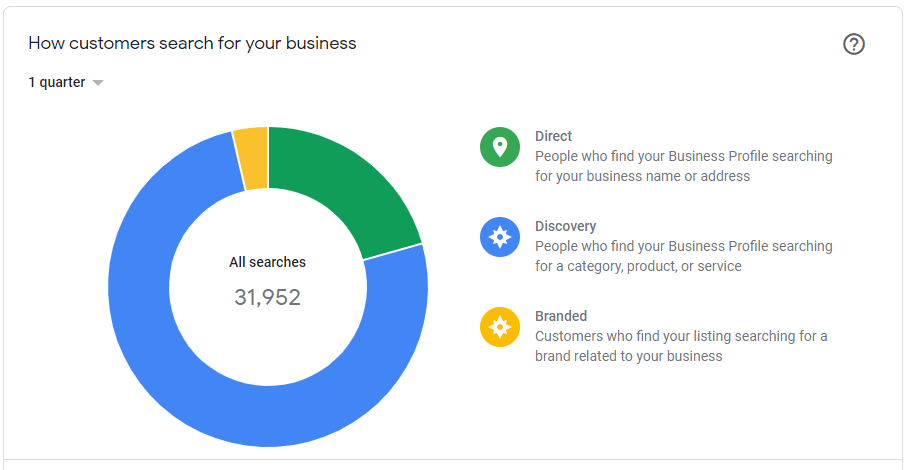
19. Write posts and updates
- Offers, updates, events
- High-quality images
- Add emojis in a professional way
- Be consistent (and maintain it)

20. Add an opening date

21. Use Google's business site

In case you’re wondering where you can find this site. I’ve created a complete guide on how to get the Google Business Site back.
22. Make use of justifications
- Reviews
- Website mentions
- Provides
- Posts
- In-Stock
- Sold Here
- Seen by Shoppers
- Menu Highlight
- On the menu
Spam Fighting
Fighting spam can significantly impact your Google Business Profile’s performance on local searches. Here’s what you can do to take advantage of some of the features that allow for removing spam from Maps and local searches:
- Check Google Maps for fake competitors
- Look at the listing if it violates Google’s guidelines
- Suggest edits and flag reviews and fake profiles.
- Use the Google Business Redressal form

Local SEO Checklist
I’ve found 260+ points you need to succeed in local search…. And turned them into a Giant Local SEO Checklist! 🤩
Click the button below!
3. Local SEO Website Audit
A website audit is certainly of the most time-consuming parts of a local SEO audit. You can do that manually by using multiple free tools like Chrome extensions or you use a tool, like Semrush, that saves you time and stress. I’m using Semrush in this local search audit tutorial.
Technical SEO audit
Run your site through an audit tool like Semrush.
If Semrush shows you a bunch of errors and warnings, it’s time to take action. Follow Semrush’s recommendations until your website is error-free. Be careful, though, only take care of all the warnings if you know what you’re doing. Semrush is only a helping hand, not a clone of an expert you.

Check for manual actions on Google Search Console
Google Search Console will show you potential manual actions taken against your website. That is a rare case, but if you’ve violated Google’s webmaster guidelines, GSC will tell you about them.

Fix sitemap issues and check for further crawling and indexation issues
A sitemap helps Google understand what web pages you’d like it to index and what should be ignored. Never add pages to the sitemap that are meant to be no-index. SEO plugins like RankMath or Yoast create their sitemaps, you only need to submit them to Google Search Console.
You can perform a quick site search yourself to see how many pages are indexed by Google. Use the site operator to see how many pages are indexed on your site.
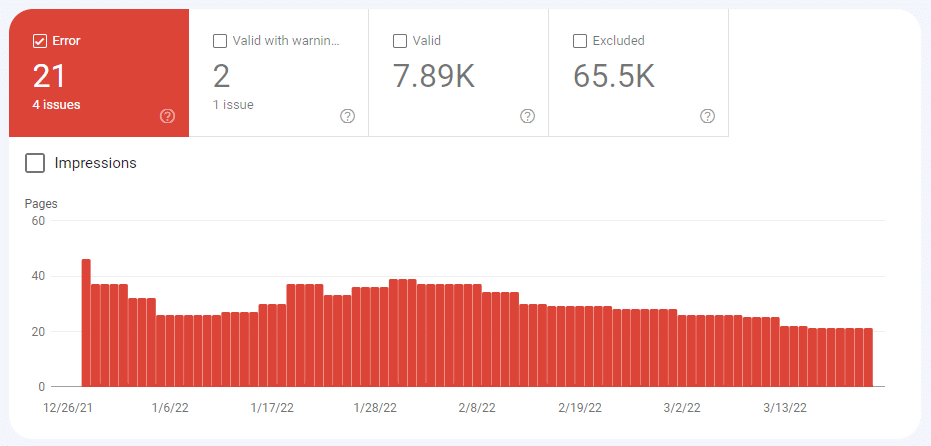
Identify technical problems such as broken links or wrong redirects
Semrush or Screaming Frog can help identify broken links or false redirects. Make sure you remove broken links if the pages they point to don’t exist anymore or redirect them to the correct destinations. Don’t mislead users by redirecting trashed pages to irrelevant pages. It’s ok to have 404 error pages if you don’t have substitutes for them.
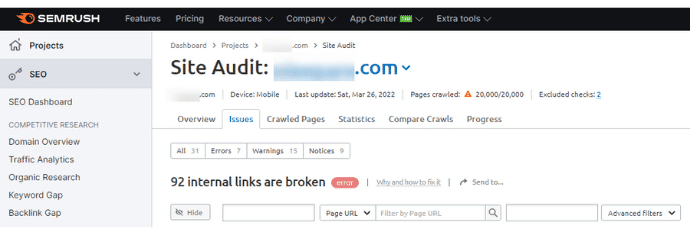
Make sure your website is mobile-friendly
Everyone talks about it, everyone knows of its importance, not everyone does it: Optimizing the mobile version of a website. Be sure to eliminate all errors and warnings the mobile-friendly test tells you about.
Your mobile hotspot (above the fold) must be optimized for fast loading, rankings, and conversions. Meaning, that try to keep it simple by using one headline, one claim/sub-headline, and one main call-to-action button.
Remove clutter and secondary CTAs – users want a nice experience, not getting overwhelmed by too many options.
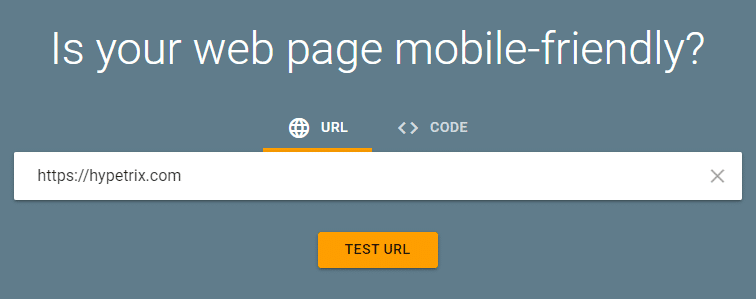
Security
- Install an SSL certificate. Test it here: https://www.ssllabs.com/ssltest/index.html
- Be sure all HTTP and www versions redirect (301) to the same HTTPS version. Check the redirects on this site: https://httpstatus.io/ – make sure only 301 is used to redirect to your preferred version. You can also use a search operator.
- Did you enable HTTP Strict Transport Security Policy (HSTS)? This forces your site’s content to load with HTTPS instead of HTTP. Check out if your website runs under HSTS and other policies: https://securityheaders.com/

Check your site's page speed and performance with dev.web

The tool does not only show you performance metrics such as core web vitals like largest contentful paint (LCP), cumulative layout shift (CLS) & first input delay (FID) that can have an impact on your search engine rankings. It also provides information about accessibility, best practices, and SEO.
Check if the site uses Schema Markup

Schema markup is a specific type of code that translates the page content into understandable information so that a search engine knows what the page is about without needing to guess. You can do a quick schema audit by visiting the rich results tester.
There are many schemas that you can use for a local business website.
Here are some that helped me get great results:
- Schema for a local business (organization)
- Article & breadcrumb Schema for blog posts
- FAQ schema for frequently asked questions on service pages or blog posts
- Product Schema including star ratings
Perform an on-page audit
Title
Make sure your title tag includes the main keyword. Exact matches at the beginning of the tag work well. Numbers, power words, and information in brackets are a great way to boost the click-through rate. Also, try to experiment with the phrase “near me”. Many big business directories like Yelp are using this with great success.

Meta description
Include your main keyword, the location or service area and try to be as incentivizing as possible. Make the user excited about the content that awaits him. List the main benefits of your service/product. Get inspired by Google Ads result for same and similar keywords.

URL Structure
Keep the URL keyword-rich but stick to a short structure. Remove all the filler words and avoid deep hierarchies. Keywords in URLs are still a ranking factor. Try to find a balance between keywords and keeping it short.

Above the fold optimization
Above-the-fold refers to the part of a web page that is visible to the user when they arrive on the page.
This is my favorite part of on-page optimization as it’s super powerful and seemingly the majority of small businesses are not paying enough attention to it. Try to optimize this part of the page for conversions in the first place.
Don’t focus solely on keywords. All you need is a distraction-free area that tells the user exactly what they should do. For most service pages that are leading him to contact the business immediately, either through phone, contact form, or to book an appointment. What you need is: Headline, sub-headline/claim, call to action button/form.

Internal linking
Be sure to interlink all relevant pages on your site with each other. Especially linking to pages that have been recently created is something many people forget. That can have a huge impact on your rankings and the overall performance of your site. Additionally, it’s highly underrated, too.
Image optimization
You want to fill your content with many images. Images are mainly there to grab readers’ attention again and again when scrolling through the page. So make sure they’re loading fast, of high quality, optimized for the search engine (keyword-rich file name & alt-text). You can also geotag those images or add information inside the EXIF data.
Exif data tool: https://www.thexifer.net/

Analyze Search Intent
Satisfying search intent tells Google the search result is congruent to the page’s content. It’s a match. If it’s a great match, Google will benefit you with better search results like rich snippets, people also ask boxes, and a lot more. The title, the meta description, and the URL should give your reader a taste of what they can expect on the page. Make sure they get what you’ve promised.

Semrush uses a great categorization when it comes to search intent.
Categories differentiate in:
- Informational intent: The user wants to find a specific piece of information/answer to a question. (how to repair your AC or California inspection cost)
- Navigational intent: The user wants to find a specific page/site. (CAS inspection)
- Transactional intent: The user wants to complete an action/conversion. (AC repair near me or nearest beauty salon)
- Commercial intent: The user wants to investigate brands, services, or products. (truck repair, pool maintenance, gardening)
Whenever you create a new page, be sure to consider these intents. Service or product pages are mostly a mix of the latter three, while people who simply want to educate themselves have a pure informational intent. You don’t want to mix the first one up with the rest of the intents. Creating a blog post for sales won’t promise you the best results, just like creating a service page is not a great fit to rank for info queries.
High-quality content
Is the content you consume high quality? Is it fun to read? Is it exciting to scroll through?
Here’s a list of things you can pay attention to when analyzing the quality of website content:
- Perfect grammar and spelling mistake-free
- Short and simple sentences make it easy to digest the information
- There is an image in every scroll length that grabs the reader’s attention
- Bold text is used to emphasize important words and phrases
- The text consists of many bullet points and paragraphs
- Sub-headlines are used to separate bigger paragraphs
- Quality images/videos are used

Duplicate Content Audit
I feel like many people have a different understanding of what duplicate content means to their local SEO campaign. First of all, duplicate content is not penalized by Google. Read that again, there is no penalty for duplicate content. Google doesn’t care whether you copied something or crafted it all by yourself.
All that matters is that Google is likely to show the “better” one of the duplicates to its users on search. And no, Google won’t automatically choose the “first” piece. You can steal your competitors’ content and do a great job on search. (if that’s legal is another story).
When we use search operators to identify duplicate content, it shows us the number of appearances of the specific search phrase across the web. In this example, you can see, there are 81 results for the specific phrase on our test page.

The second screenshot shows that there are 148 results for the chosen phrase off site. So the competition and other sites are using this phrase more often than our local business site. Make sure you test this with popular phrases of your business.

If you realize that some pages have interrupted search impressions on Google Search Console, that’s often a sign that your pages are affected by duplicate content problems. Google only wants to show the best result to its users, not the second-best. Check your pages and see if you can make them more unique. Target one keyword and its synonyms per page and you’ll do just fine.
Content Audit
A content audit is a kind of like taking inventory of your existing content while matching them with your goals. This content audit will help you identify content-related issues so that you can turn your website into an amazing experience for your potential customers.
General Homepage Considerations
A local business homepage is supposed to either rank for
- a specific main service/product including the brand name OR
- rank for the fictive (no keyword) brand name.
An example for 1. would be “United Heating & Cooling Company” – which contains the primary keyword “heating & cooling”. In this case, it’s better to make the homepage the main service page that targets “plumbing”, “plumber in city”, “plumbing company” etc.
If you’re thinking about a relaunch and the business has multiple locations, don’t use a specific location on the homepage that you use somewhere else – that might confuse Google.
Goal: More leads/sales from customers that search for the service AND the brand name.

An example for number two would be “manningmechanical.com” with the title: “Manning Mechanical”.
It’s a HVAC contractor but it doesn’t explicitly say that. Here it can make sense to create an additional service page about HVAC that targets the main service and leave the homepage with their brand name “Manning Mechanical”.
You can also make it about the main service – it depends a bit on the rest of the website structure. The topic is certainly very complex, I just want you to show some ways to approach the problem.
Goal: Sales from customers that explicitly searched for the business (direct search) and inform potential customers about business reputation, services, background info.

Homepage Content
- H1 headline stating what the business does
- The first paragraph makes the user excited about the rest of the page and also ensures that they are on the correct page.
- Social proof (reviews, 3rd party ratings like Google/Yelp, video testimonials, etc)
- For single-location businesses: Name, address, phone, hours, email
- Why-choose-us section
- List of services/products
- Links to service area/location pages
- Team section (friendly faces, real names, roles)
- FAQ section
- About us
Nothing is set in stone. If you think, certain sections aren’t a good fit for your specific case, that’s ok, just leave them.
Service/product pages
- Is there an H1 headline making it clear what the page is about?
- Does the page provide social proof
- Is there a main call to action?
- Do high-quality images showcase what the service or product is?
- Is the USP clear?
- Do they NOT contain geo-information like location or address? (to be clear, even if it’s a local business website, the location shouldn’t be part of the standard service/product pages – that’s because people could be turned off when they come from place A but you’re talking about place B – even though you serve both areas. Make it clear to the user where you can serve them or how they can reach you and use specific locations on location pages.
Blog
- Do they cover local as well as niche-specific topics?
- Are the blog posts share-worthy or have the potential to rank?
- Are there links pointing to related service pages?
Service area/location pages
- Does the site include service area or location/city pages that target specific niche & geo-relevant keyword phrases like “plumber in Beverly Hills” or “Gardener in Huntington”?
- Do those pages contain enough geoinformation that makes it clear to the user what and where you can serve them when they come to a page like that?
- Are those pages all appropriately interlinked?
Contact Us
Does the “Contact Us” page provide all relevant ways to contact the business?
- “Contact Us” form
- Facebook widget
- Social media links
- Email address
- Address or service area
- Phone number
- Google Map with either service area or a location pin
About Us
What is the one thing that many people do when they check out a website? They check the “About Us” section.
- Does it show expertise?
- Does it show authoritativeness?
- Does it show trustworthiness?
A story combined with authentic pictures (no stock images) can make a huge difference. I can speak for myself, many times I come to a website that I would like to do business with, the first thing I do is check out their “About Us” section. If I can’t figure out who they are and if I can trust them, I’m gone forever.
Local SEO Checklist
I’ve found 260+ points you need to succeed in local search…. And turned them into a Giant Local SEO Checklist! 🤩
Click the button below!
4. Local Citation Audit
Citations or business info submissions on directories or other sites are a big part of local SEO. To perform an effective local search audit you should pay attention to the following steps:
1. Are citations indexed on Google?
To be considered by Google the directory submission pages need to be indexed. Check the image below to see how you can search for your specific citations on certain directories. (site:citation-site.com “brand name”)
However, just because a page is indexed doesn’t necessarily mean Google uses it currently for ranking evaluations. Make sure you can find the respective pages on Google.
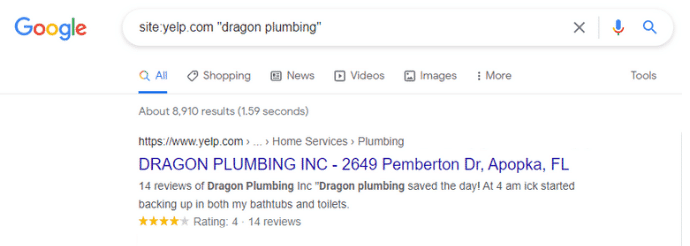
2. Is your business listed on all relevant directories & sites?
- Global / high authority sites & directories
Facebook, Yelp, Google, Bing, Foursquare
- National
bbb.org., botw.com, chamberofcommerce.com
- Industry-related
houzz.com, angieslist.com
- Local
nycbusinessdirectory.com, ladirectory.com
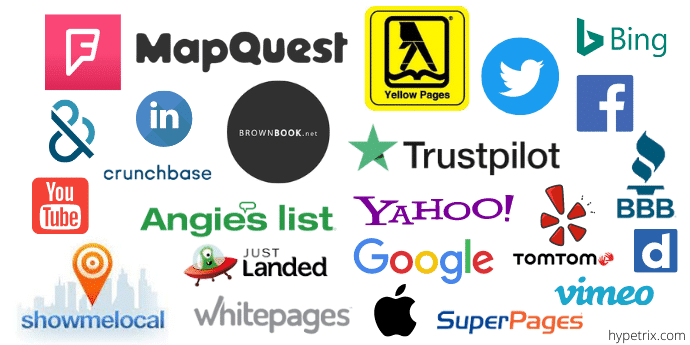
3. Check if the business info is consistent across those sites and fix errors
Make sure name, address, phone number, website and hours are consistent across all directories. Data inconsistencies can confuse Google. It might be that Google doesn’t recognize specific business listings if the data doesn’t add up.
There are two ways that I recommend:
- You can either run a citation tracking campaign with Brightlocal and let them do the job for you. It’s a bit more expensive but also more reliable.
- Or you can do this manually and hire someone from Fiverr who checks all different listings. This needs at least some experience with the Fiverr gigs. Not all sellers provide the same quality, and if things with your listings get messed up that can be huge trouble.
5. Local Search Reputation Audit
A positive brand reputation is not only crucial as it works towards a better brand recognition, it is also important as it factors into prominence, one of the big local search ranking factors.
7 Simple Steps to Audit Your Reviews
1. What sites list your business reviews?
The easiest way to figure that out is by searching for your brand on your preferred search engines like Google, Bing, or Ecosia. The citation audit will also tell you about the most prominent sites that list your business info.
2. Have all reviews been replied to?
That includes all the sites you’ve just found that list reviews for your business.
3. What about the quality of the replies?
This is what they should be:
- Personal
- Relevant
- Authentic
- Professional
4. Is there a review system in place that gets new reviews on autopilot?
An automated review system is crucial to get a good stream of incoming reviews. If this is not set up, how does the business receive its reviews?
Since you would need around 30 5-star reviews to make up for one 1-star review, you should get as many great reviews as possible. A system that brings in new reviews on autopilot is a great preventative measure.
5. What are Other sites that mention your brand apart from the known Ones?
Q&A sites like Quora or online forums like Reddit are often places where customers share their opinion with other interested people. Find other sites that mention your brand.
6. Who is talking negatively about your business?
Not only typical review sites or the Google business profile are used to blow off steam. If you want to find negative feedback about you brand, search for “do not purchase from [brand]”, “worst experience [brand]” or “negative reviews [brand]”.
7. Are there potential brand advocates?
Figure out who tags or mentions your business regularly. Maybe there are people or brands with a bigger following that you could cooperate with.
6. Local Off-Page Audit
Off-page activities involve anything that drives awareness and referral traffic from external sources to your site.
Backlink Analysis
A backlink analysis will tell you about the strength of your backlinks and your competition’s. It’s crucial to understand what backlinks can make a difference and which pages have the potential to get improved.

Here are a few tools that you can use to perform a backlink analysis:
- Semrush
- Google Search Console (left sidebar under “links”)
- Majestic.com
- Moz
- Ahrefs
I’ve been using Semrush for a while and it does a great job when auditing backlink profiles. What we need first is an overview of our competitors’ backlinks compared to ours.
All you need to do is click on backlink analytics on the left sidebar, choose your project and run a new report.
Semrush is showing your competitors’ backlinks and yours.
It also reveals those pages that have a great potential of getting improved.
What you need to focus on is the number of backlinks, referring domains, the domain rating, backlink types (text, image, form, frame), and link attributes (follow, no-follow, sponsored, UGC).

If you want to maximize your efforts, you can also run a backlink audit on Semrush. It will show you certain backlink toxicity scores and whether you should disavow links or not.
If you’re a beginner, you shouldn’t focus much on the backlink audit tool as disavowing links can do more harm than good if you don’t know exactly what you’re doing.
Most of the time you won’t need to take any action as Google knows quite well how to differentiate between good and bad links and when to penalize a business would be the correct action.
Local Backlink Checklist
When you’re auditing your backlink profile you also want to think about how perfect backlinks for your local business would look like. In order to make it as easy as possible for you to identify good backlinks, I’m going to show you a backlink checklist that you can use for your local business.
- Anchor texts including geographical information like "plumber Chicago", "gardener nearby", or "mattress store near me" can help increase relevance.
- High DA/DR are indications for a strong backlink profile.
- Links on sites with topical and geographical relevance promise best results.
- Backlink sites should get relevant traffic. Zero-traffic sites are most likely PBNs.
- Start to build your backlink profile with citations on local business directories. Look for directories in the close vicinity of the business. For example, every greater city has numerous directories listing local businesses.
Organic rankings factor into local search results as well. Backlinks are still a very powerful way to boost them. Try to keep an eye on your backlink profile and fill it regularly with relevant links.
Social Media
Social media is not a direct ranking factor but it can help you achieve better search results in different ways:
- Social media enables you to reach a wider audience which leads to a higher possibility to get backlinks.
- Social media profiles or pages on social sites can rank for specific search terms.
- Complete and engaged social profiles build trust

What you can do?
- Create content (posts, videos, images) regularly
- Reply to comments
- Create content that targets a general audience and your local area
- Consistency is king. Most people stop doing social media work after a couple of months as they don’t see any progress. That is a huge mistake: My own Facebook group needed ~12 months to get 1000 members. Another 12 months to get 29.000 members. Take action daily, be persistent yearly.
- Show the world you’re an expert.
Partner Up
Build relationships with other local businesses and influencers. You can share each others’ audience and maybe get backlinks and brand mentions from them as well.
Is this something the business you’re auditing does?
- Create content that mentions other local businesses
- Create a special offer that your customers only get when they do business with you and certain other local businesses
- Negotiate deals with other businesses for your staff and theirs
Final Words
Performing a local SEO audit properly can be time-consuming if you want to do it correctly. Not all of the points mentioned in this local search audit are necessary to consider. If you do it for a client, make sure you understand their pain points and align the audit to what they need.
Tell me what you think!
Please, leave a comment below and tell me for what you’re going to need this local SEO audit? Maybe you’ve found something that’s missing and you’d like to share it?
Anyway, I’d be happy to hear from you what you think!
Resources
Local SEO Checklist
I’ve found 260+ points you need to succeed in local search…. And turned them into a Giant Local SEO Checklist! 🤩
Click the button below!



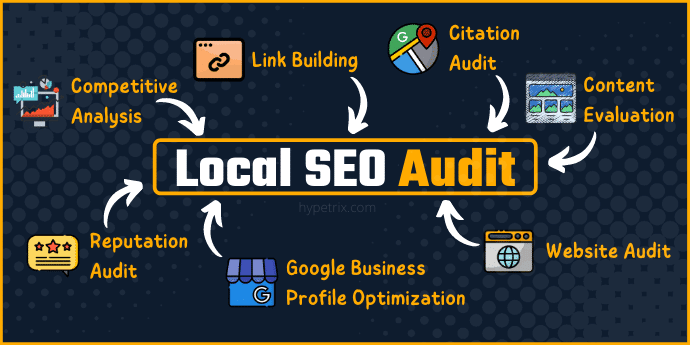
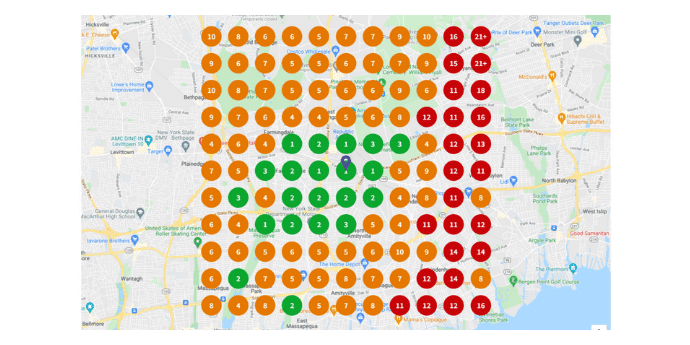


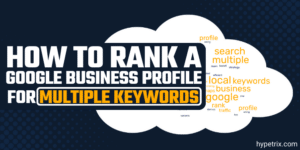
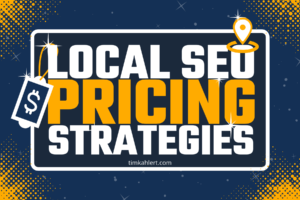
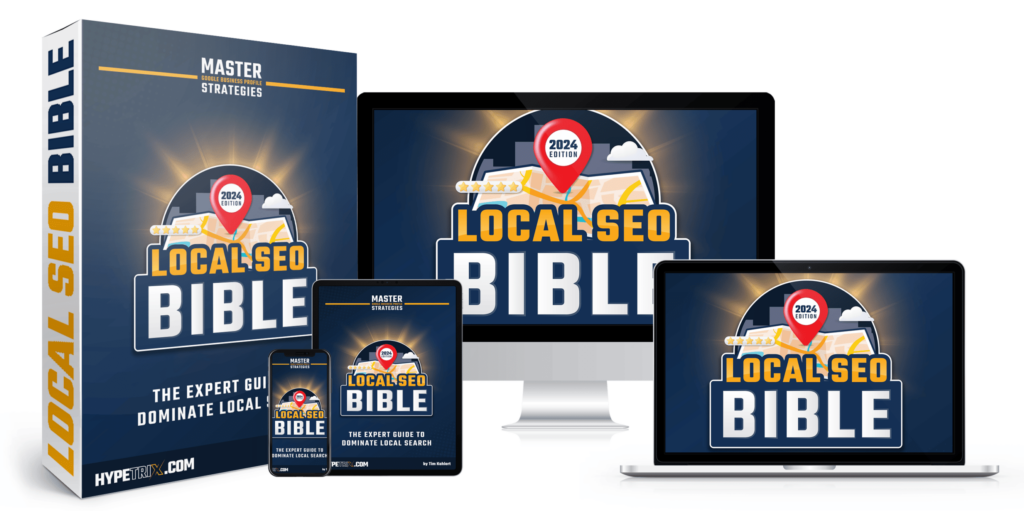
Wow! Tim, I consider myself to be fairly knowledgeable about Digital Msrketing, GBP, and SEO. But every time i read one of your posts I learn something new. In this particular post I learned a bunch. And I thought I knew it ALll! Ha, ha, ha.
Thank you very much for all you do.
Thanks a lot for the great feedback, Don! That’s amazing!